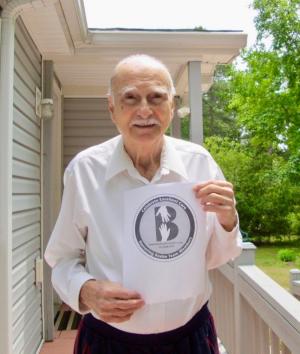Prostate cancer team delivers exceptional care at Beebe
Last year, Beebe urologist Richard C. Paul, MD, diagnosed me with very high-risk prostate cancer.
My diagnosis was followed by a long series of scans and procedures, including hormone treatment. After reviewing the results of these tests, scans and procedures, I was assigned to Owen Thomas, MD, at Beebe’s Tunnell Cancer Center for treatment. Dr. Thomas is board certified in radiation oncology, so although I knew I was in good hands, I still did some research.
During my research, I found an article in the International Journal of Radiation Oncology, Biology, Physics, written by another of Beebe’s radiation oncologists, Samuel Swisher-McClure, MD. The article was titled: It's the Team, Not the Beam, and in it, Dr. Swisher-McClure discussed how the entire team treating the patient is what really matters most. And Dr. Swisher-McClure is right.
I was scheduled for 28 consecutive days of radiation. I received about 15 minutes of radiation per day, and the process ended Monday, May 22. Every Monday during this time, I would meet with one of the four radiation oncologists and a nurse. They would check my progress and answer any questions, especially those about radiation side effects. This made me feel safe and heard and cared for during the course of my treatment.
My sister Pat came along for every treatment session. I would drive us to treatment, and she would drive us home amidst all the roadwork on Route 24 from Long Neck. There is a pleasant private radiation oncology waiting room, replete with a large basket of snacks, where Pat would wait for me to finish. It is a nice gesture on the part of Beebe to think of those who are supporting patients going through radiation treatment.
It is hard to believe, but the prep for radiation therapy is more complex than my open-heart bypass of two years ago. Before each session, I drank 22 ounces of water, and once in the lead-lined room containing the radiation photon beam, I had a rotating team of two or three radiology technologists that prepared me for the process. One particular radiation technologist, aka my "bro," Raymond Phillips, put on music such as Elvis or oldies for me to listen to. The treatment apparatus would then circle me for about 10-12 minutes while I calmly stared up at the ceiling, a lighted picture of cherry blossoms and clouds, and listened to good tunes. Each session was peaceful and calming.
Sometimes, I would tease radiation therapists Cassidy Folts, Rachel Groscup and George Schmidt, or Scott Bunch, chief radiation therapist, calling them "chicken" because of their haste to leave the room before the radiation beam was activated. I was relaxed enough to tease them, but let me state clearly that their care for me was beyond excellent.
By the time this article publishes, I will have completed my 28th radiation treatment, and I will have proudly rung the bell in the hallway by the radiation room to celebrate the end of my treatment plan.
Although my diagnosis was far less than desirable, I wanted to write to thank everyone I interacted with in Radiation Oncology. You were all exceptional, and I am glad to live in a community where this is available so close to home.
Radiation Oncology is a great team — keep up the good work!
As a community-based, not-for profit healthcare system, Beebe Healthcare depends on the generous support of the community it serves. To make a gift to celebrate the excellent care you or a loved one has received, visit Beebe Medial Foundation at beebemedicalfoundation.org or call 302-644-2900. Want to share your story? Contact Amanda Neal at aneal@beebehealthcare.org.


















































